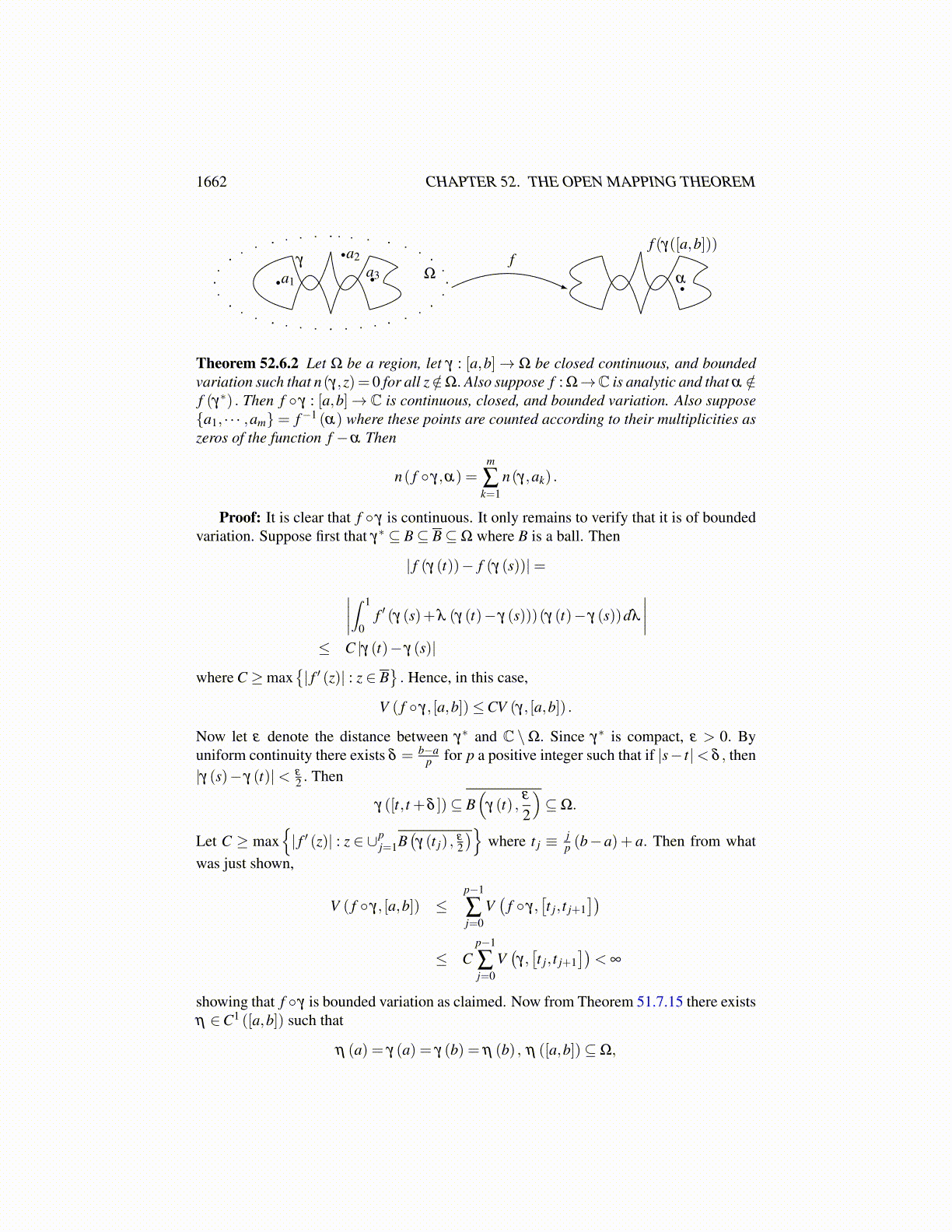
1662 CHAPTER 52. THE OPEN MAPPING THEOREM
52.5 Exercises1. Consider the function, g(z) = z−i
z+i . Show this is analytic on the upper half plane, P+and maps the upper half plane one to one and onto B(0,1). Hint: First show g mapsthe real axis to ∂B(0,1) . This is really easy because you end up looking at a complexnumber divided by its conjugate. Thus |g(z)| = 1 for z on ∂ (P+) . Now show thatlimsupz→∞ |g(z)|= 1. Then apply a version of the maximum modulus theorem. Youmight note that g(z) = 1+ −2i
z+i . This will show |g(z)| ≤ 1. Next pick w∈ B(0,1) andsolve g(z) =w. You just have to show there exists a unique solution and its imaginarypart is positive.
2. Does there exist an entire function f which maps C onto the upper half plane?
3. Letting g be the function of Problem 1 show that(g−1)′(0) = 2. Also note that
g−1 (0) = i. Now suppose f is an analytic function defined on the upper half planewhich has the property that | f (z)| ≤ 1 and f (i) = β where |β | < 1. Find an up-per bound to | f ′ (i)| . Also find all functions, f which satisfy the condition, f (i) =β , | f (z)| ≤ 1, and achieve this maximum value. Hint: You could consider the func-tion, h(z)≡ φ β ◦ f ◦g−1 (z) and check the conditions for the Schwarz lemma for thisfunction, h.
4. This and the next two problems follow a presentation of an interesting topic in Rudin[113]. Let φ α be given in Lemma 52.4.7. Suppose f is an analytic function definedon B(0,1) which satisfies | f (z)| ≤ 1. Suppose also there are α,β ∈ B(0,1) and it is
required f (α) = β . If f is such a function, show that | f ′ (α)| ≤ 1−|β |2
1−|α|2. Hint: To
show this consider g = φ β ◦ f ◦φ−α . Show g(0) = 0 and |g(z)| ≤ 1 on B(0,1) . Nowuse Lemma 52.4.6.
5. In Problem 4 show there exists a function, f analytic on B(0,1) such that f (α) =
β , | f (z)| ≤ 0, and | f ′ (α)| = 1−|β |2
1−|α|2. Hint: You do this by choosing g in the above
problem such that equality holds in Lemma 52.4.6. Thus you need g(z) = λ z where|λ |= 1 and solve g = φ β ◦ f ◦φ−α for f .
6. Suppose that f : B(0,1)→ B(0,1) and that f is analytic, one to one, and onto withf (α) = 0. Show there exists λ , |λ | = 1 such that f (z) = λφ α (z) . This gives a dif-ferent way to look at Theorem 52.4.8. Hint: Let g = f−1. Then g′ (0) f ′ (α) = 1.However, f (α) = 0 and g(0) = α. From Problem 4 with β = 0, you can concludean inequality for | f ′ (α)| and another one for |g′ (0)| . Then use the fact that the prod-uct of these two equals 1 which comes from the chain rule to conclude that equalitymust take place. Now use Problem 5 to obtain the form of f .
7. In Corollary 52.4.5 show that it is essential that α < 1. That is, show there exists anexample where the conclusion is not satisfied with a slightly weaker growth condi-tion. Hint: Consider exp(exp(z)) .
8. Suppose { fn} is a sequence of functions which are analytic on Ω, a bounded regionsuch that each fn is also continuous on Ω. Suppose that { fn} converges uniformly on